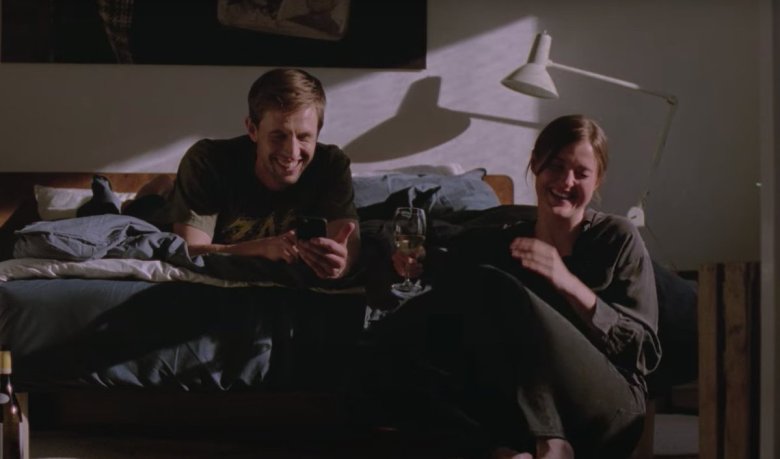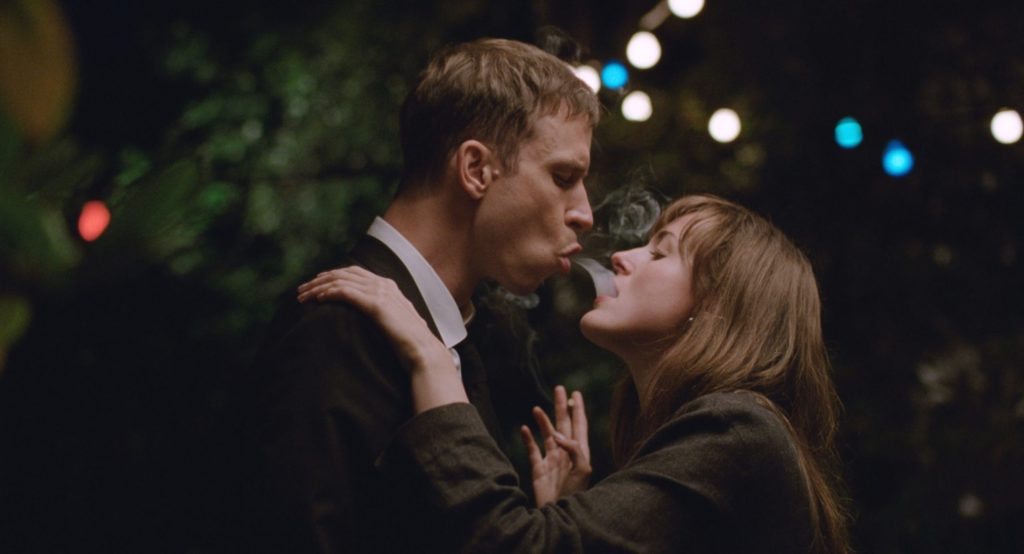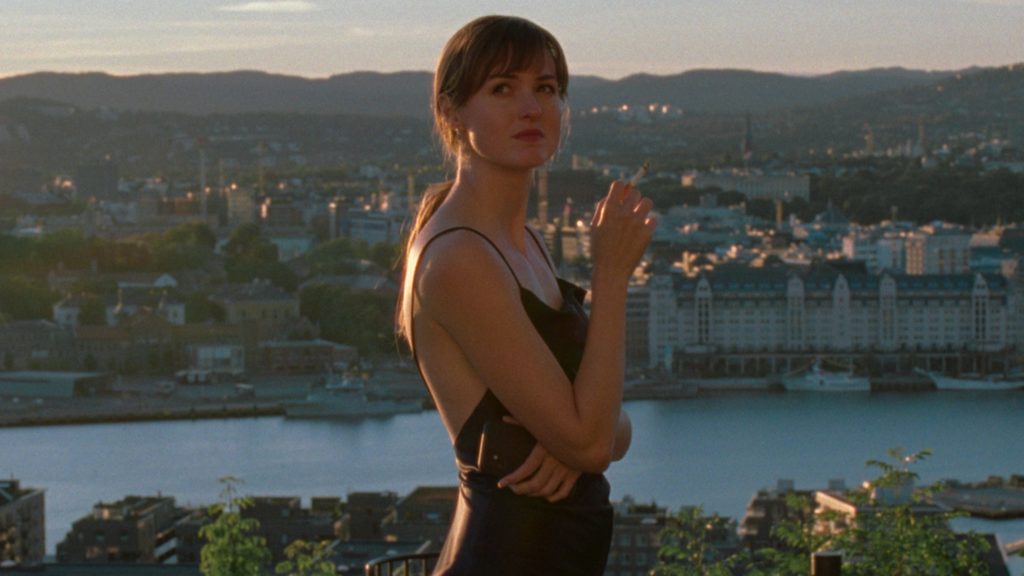Genre: Drama
Logline: A young woman struggling to find her direction in life begins to doubt the relationship she’s in with a successful graphic novel cartoonist.
About: This movie has taken over the festival circuit the last year, winning every prize under the sun. It sits at a 96% on Rotten Tomatoes and is the front-runner to win best international feature next week at the Oscars. You can watch a breakdown of the most famous scene in the movie from the director, here.
Writers: Joachim Trier and Eskil Vogt
Details: 128 minutes

Carson.
Does not like.
Indie films.
I’ve heard the criticism.
Like an octopus using its eight tentacled legs to grab onto anything so it cannot be taken from the sea, Scriptshadow clings tightly to traditional formatting and Hollywood structure so that it never has to face an indie film.
Au contraire mon frère.
I can appreciate artsy-fartsy character-driven screenplays. My argument is that they’re A LOT HARDER to pull off. The reason for this is the distinction between character and plot. Audiences connect with the characters. But they’re motivated by the plot. Interesting things need to keep happening in the story to keep them invested, and those things need to happen in a structured logical way so as to not feel random and messy.
The Worst Person in the World is one of the few movies I’ve seen that’s been able to withstand the randomness and messiness that sinks its competitors. There is zero plot in this movie. No structure to speak of. The screenplay uses chapters to create a semblance of structure but whenever a script uses chapters, it’s a sign that they don’t have a plan. And yet, somehow, “Worst Person” thrives.
The movie follows a young woman in Oslo named Julie who doesn’t really know what she wants out of life. She’s artistic but can’t seem to commit to any artistic endeavor. As a result, she ends up working at a book store while she figures it out.
Meanwhile, she meets Aksel, the author of a graphic comic with vaguely misogynistic undertones. Aksel is a good decade and a half older than Julie and she admires that, unlike her, he knows exactly what he wants out of life.

But that difference results in a difference in lifestyles and Julie soon finds herself going to a boring upscale parties with Aksel’s friends, who already have families, something she’s not sure she wants.
She excuses herself from one of these parties early, and on the way home meets Eivind, the polar opposite of Aksel. Eivind is like her – someone who lives in the moment, who doesn’t take life too seriously. Several months later, they decide to couple up, and Julie leaves Aksel.
As you might expect, everything is wonderful with Eivind at first. But whereas her life is now fun, it has lost the intellectual conversations, the maturity, the responsibility. Sure, she no longer lives in the shadow of a successful writer and therefore doesn’t have to face all the expectations that come with that. But is that a good thing? That’s Julie’s achilles heel. She always wants what she doesn’t have.
****MAJOR SPOILERS START NOW****
A year into her relationship with Eivind, Julie runs into one of Askel’s friends and he has bad news for her. Askel’s been diagnosed with pancreatic cancer. It’s incurable. He will die. This leads us to a final act where Julie reconnects with Askel, spending his last days with him, as she, once again, questions what she wants out of life. There is no Hollywood movie miracle that comes to save Askel, and his death leaves a hole in Julie’s heart that will never heal. As sad as it all is, you gotta keep going, so that’s what Julie does. She turns the page and begins the next chapter.
****MAJOR SPOILERS OVER****
I’m endlessly fascinated by movies like this because I’m not supposed to like them. I need a plot. And there was no plot within 12 parsecs of this screenplay.
So why did I still like The Worst Person in the World?
One thing Joachim Trier does well is create characters who are messy enough to feel like real people, but not so messy that they seem made-up. I read a lot of amateur screenplays where characters act one way one scene (they help an old lady across the street) and the complete opposite the next scene (they rob a convenience store). That’s not a nuanced character. That’s straight up confusing.
There has to be an internal consistent logic to a character yet with just enough messiness to make them realistic. Cause if a character is too consistent, they come off as on-the-nose. Like if a character is angry and yells all the time, yes, that character has an internal consistent logic. But do they feel like a real person? No, they feel like a cliche.
Trier is quite good at finding the balance. Julie is defined by her lack of commitment, which allows her to be fiercely loyal and, also, borderline promiscuous. She can play the responsible adult one day, and the out-of-control partier the next. Not only does this capture the messiness of real life but it makes for an unpredictable character, which is essential in a movie that has no plot. Because if we don’t have a plot to keep us turning the pages, we need some other tool to do so. Wondering what our hero is going to do next is that tool.
Since this is the month of the First Act, today’s screenplay is a good example of what happens when you don’t have a first act. There is no inciting incident in the first 30 pages. If pressed, I would say that the inciting incident would be when Julie meets Eivind. But that happens around page 40.

Still, it’s not a traditional inciting incident in that it doesn’t introduce a goal into the story. In fact, after Julie and Eivind meet, they go back to their lives for 20 pages. Only then do Julie and Eivind meet again and decide to get together.
At this point in the movie, the only thing going on is character relationships. There is no goal. There is no purpose. Which is why it’s so hard to pull these movies off. And it leads to the biggest problem with no first act which is that you don’t lay out a blueprint for where your story should end. If there is no goal, there is no end-point. This forces the writer to come up with something big and important late so that the movie can end. And there aren’t a lot of options you can use that don’t feel lazy, random, or forced.
****SPOILERS****
Trier chose cancer. And I’d be curious to know if he had that figured out ahead of time or if he came up with it when he realized he needed to end the story somehow. I would guess it’s the latter because it usually is when you throw cancer into the plot late. Cancer tends to be a cliche story option since it’s so ubiquitous in storytelling. Anything that’s used extensively in soap operas is probably not a go-to story choice.
But, again, you lock yourself into these choices when you don’t have a plot. And Trier understands character well enough that the choice feels authentic. Would I recommend other writers do this? Not in a million years. Like I said, I read all the failed versions of The Worst Person In The World and they all feel like a blindfolded writer stabbing at story choices in the dark. “Uhhhhh… CANCER! I’ll give someone cancer! Yeah, that works.”
There was one scene in particular that showcased how Trier was heads and tails above everyone else in this department. Julie and Askel are chatting at the hospital and Julie reveals that she’s pregnant. This is a bombshell to Askel, who desperately wanted to have kids with Julie but she always resisted. Julie asks Askel to repeat to her what he used to tell her, which is that she’ll be a good mother, in order to give her confidence. Watching Askel have to tell the woman he loves that she’ll be a good mother to a child that isn’t his while knowing he will die without ever having a child himself is one of the most heartbreaking conversations I’ve ever seen in a movie. I can’t remember the last time I’ve seen so many layers going on in a conversation.
It was scenes like this that were the movie’s biggest strength and biggest weakness. It hits hard. And if you’re someone who likes to feel the full spectrum of emotions, you’re going to love this movie. But if you want your deaths packaged in that feel-good “everything’s going to be okay” shell, like when Aunt May dies in Spider-Man No Way Home, this movie is going to mess you up for weeks. Cause it’s too real. And it doesn’t try and soften the blow.
****END SPOILERS****
Despite its sad ending, the movie has a lot going for it. There’s no question that the lead actress is a breakout star. She’s one of those actresses you can’t look away from. Even when she’s doing nothing, you’re still interested in watching her. I don’t know much about acting but I hear that’s a quality all directors look for in an actor.
The directing is really good. I immediately put Oslo on my “Cities to Visit” list after this. The place looks absolutely stunning. The cinematography was amazing. There are several director-y sequences that were fun, like when Julie did mushrooms. Both Trier’s casting and the performances he got out of his cast were top-notch.

Trier also has this ability to make scenes feel natural. You would’ve thought that the scene where Julie crashes a random party on her way home, when she meets Eivind, was done by finding a real party and taking a couple of cameraman into the house and shooting everything improvised. That’s how natural it felt. But I know that’s not the case. Everything had to be meticulously planned and constructed.
That’s what separates Trier, a director I’m shocked hasn’t been snatched up by Hollywood yet, from the competition. I was thrilled, and surprised, when I checked his IMDB to see that he also wrote and directed one of my favorite movies from 2017, Thelma. So he’s not a one-hit wonder.
The Worst Person In The World is not going to be for everyone. But if you’re like me and resist art-house fare because it’s slow and boring, I can assure you that this film is better than 99% of the artsy-fartsy movies out there. It’s definitely worth checking out.
[ ] What the hell did I just watch?
[ ] wasn’t for me
[xx] worth the rental
[ ] impressive
[ ] genius
What I learned: If you’re forgoing plot, make sure your main character is some variation of unpredictable. Because they will be responsible for carrying the weight of us wanting to turn the page. And if we always know what they’re going to do before they do it, we’ll grow bored. We need that uncertainty, that mystery in their actions, to make up for a plotless story.
What I learned 2: The actress who played Julie, Renate Reinsve, famously quit acting the day before she received this part (to become a carpenter). So if you’re ever considering giving up your artistic pursuit, hang in there! You never know when that big break is coming.
What I learned 3: In indie movies, a lot of times, your hero will fail to overcome their flaw. Julie’s flaw is her indecisiveness. She cannot commit to anything. As the movie comes to a close, she still hasn’t figured this problem out. She ends pretty much in the same place she started. This can be frustrating to mainstream audiences but intellectual audiences love this stuff as it’s more reflective of real life.

